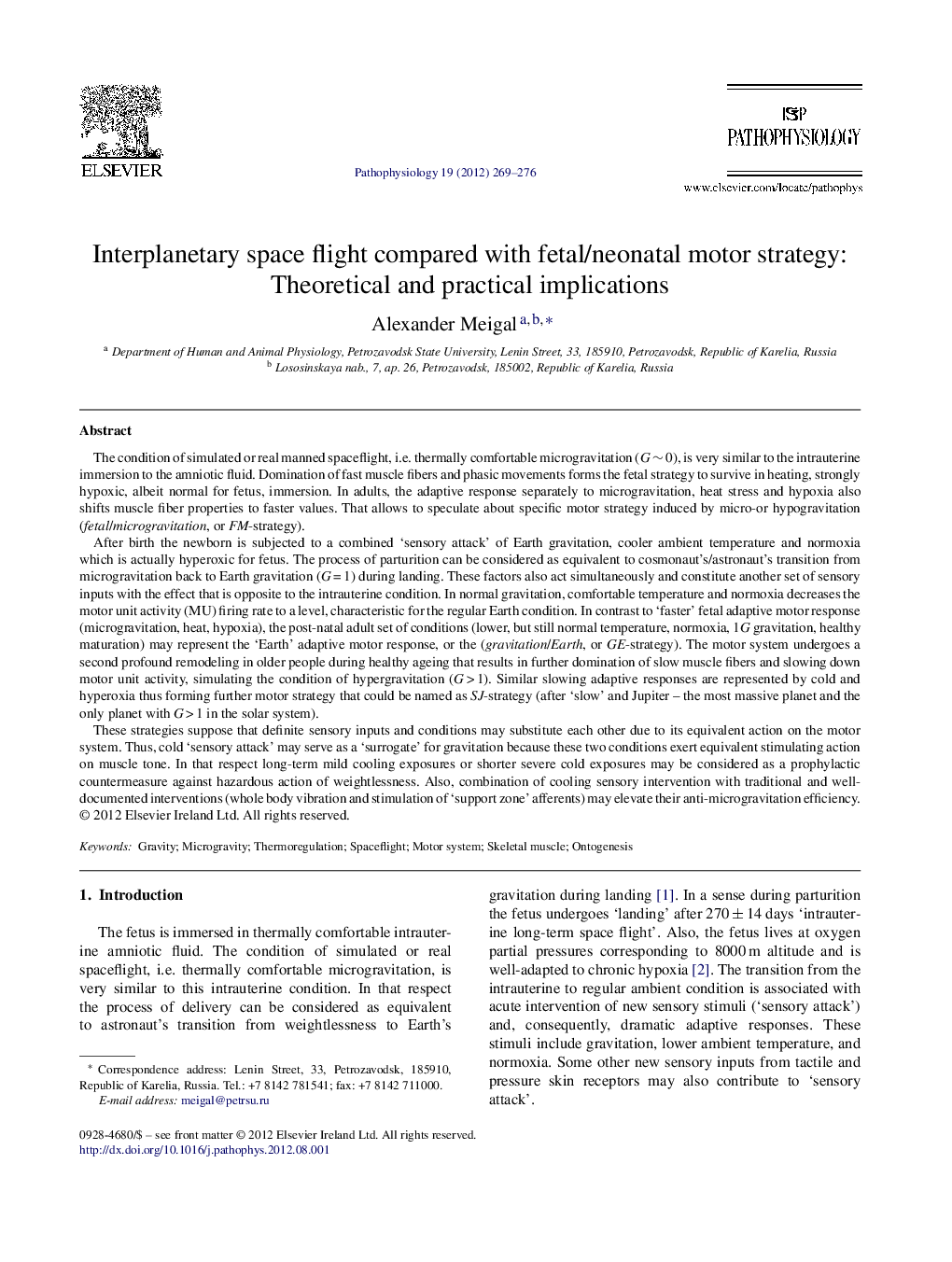| کد مقاله | کد نشریه | سال انتشار | مقاله انگلیسی | نسخه تمام متن |
|---|---|---|---|---|
| 4137137 | 1272009 | 2012 | 8 صفحه PDF | دانلود رایگان |

The condition of simulated or real manned spaceflight, i.e. thermally comfortable microgravitation (G ∼ 0), is very similar to the intrauterine immersion to the amniotic fluid. Domination of fast muscle fibers and phasic movements forms the fetal strategy to survive in heating, strongly hypoxic, albeit normal for fetus, immersion. In adults, the adaptive response separately to microgravitation, heat stress and hypoxia also shifts muscle fiber properties to faster values. That allows to speculate about specific motor strategy induced by micro-or hypogravitation (fetal/microgravitation, or FM-strategy).After birth the newborn is subjected to a combined ‘sensory attack’ of Earth gravitation, cooler ambient temperature and normoxia which is actually hyperoxic for fetus. The process of parturition can be considered as equivalent to cosmonaut's/astronaut's transition from microgravitation back to Earth gravitation (G = 1) during landing. These factors also act simultaneously and constitute another set of sensory inputs with the effect that is opposite to the intrauterine condition. In normal gravitation, comfortable temperature and normoxia decreases the motor unit activity (MU) firing rate to a level, characteristic for the regular Earth condition. In contrast to ‘faster’ fetal adaptive motor response (microgravitation, heat, hypoxia), the post-natal adult set of conditions (lower, but still normal temperature, normoxia, 1G gravitation, healthy maturation) may represent the ‘Earth’ adaptive motor response, or the (gravitation/Earth, or GE-strategy). The motor system undergoes a second profound remodeling in older people during healthy ageing that results in further domination of slow muscle fibers and slowing down motor unit activity, simulating the condition of hypergravitation (G > 1). Similar slowing adaptive responses are represented by cold and hyperoxia thus forming further motor strategy that could be named as SJ-strategy (after ‘slow’ and Jupiter – the most massive planet and the only planet with G > 1 in the solar system).These strategies suppose that definite sensory inputs and conditions may substitute each other due to its equivalent action on the motor system. Thus, cold ‘sensory attack’ may serve as a ‘surrogate’ for gravitation because these two conditions exert equivalent stimulating action on muscle tone. In that respect long-term mild cooling exposures or shorter severe cold exposures may be considered as a prophylactic countermeasure against hazardous action of weightlessness. Also, combination of cooling sensory intervention with traditional and well- documented interventions (whole body vibration and stimulation of ‘support zone’ afferents) may elevate their anti-microgravitation efficiency.
► Microgravity, heat, hypoxia and fetal age exert synergistic effect on the motor system due to common intrauterine origins.
► After birth, gravity, cold, oxygen supply and age cooperate in forming further motor strategies.
► Motor strategies during the lifespan are primarily driven by gravity (microgravity).
► The conditions within these strategies can substitute for each other and can be expressed in gravity units (G).
► Cold can be utilized as a gravity surrogate to prevent muscle atrophy in the long-term spaceflight.
Journal: Pathophysiology - Volume 19, Issue 4, September 2012, Pages 269–276